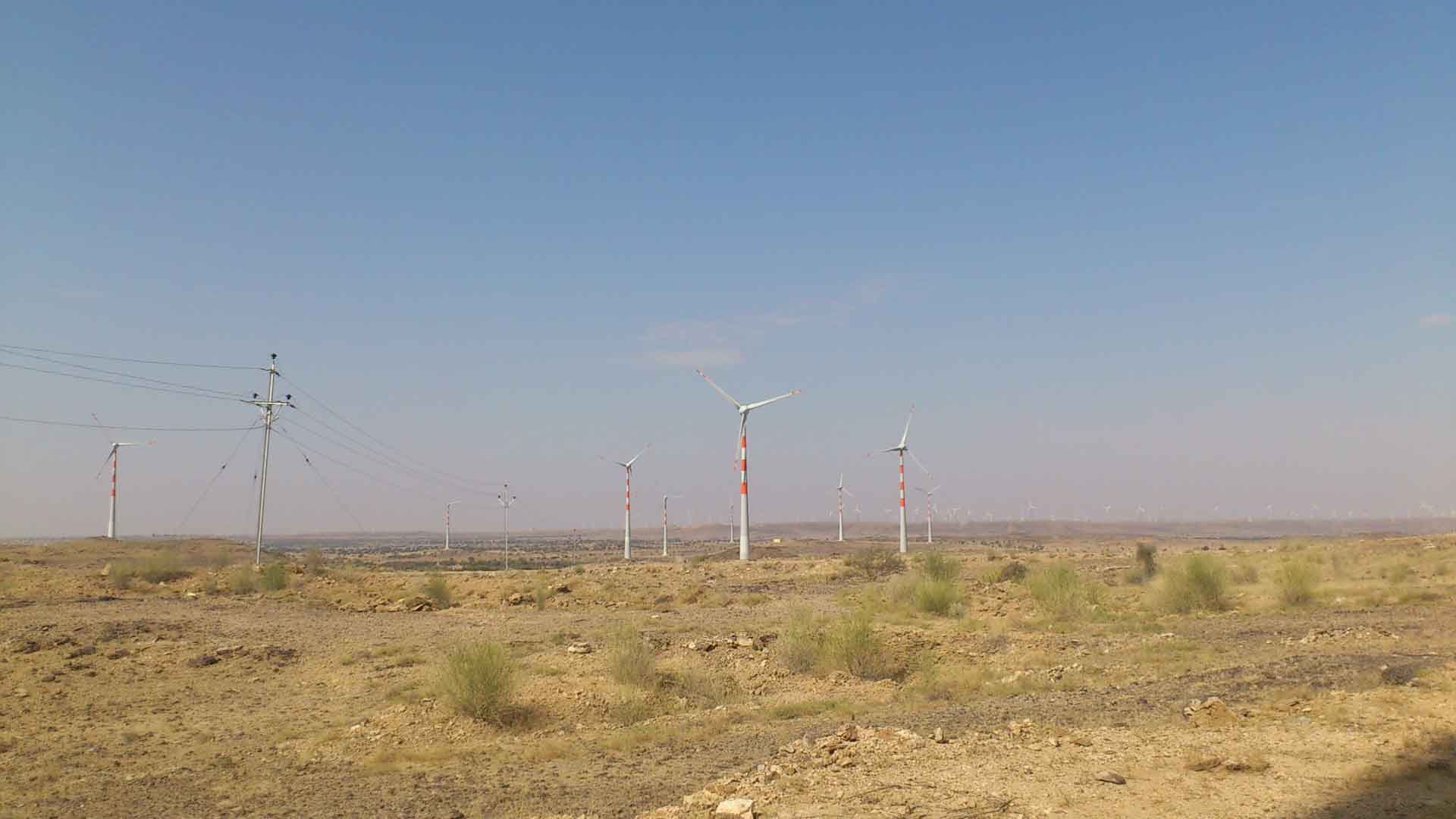How wind power drives economic development
In the heart of the Thar Desert in the Indian province of Rajasthan, a wind power project with 37 wind turbines and a total capacity of 29.6 MW supplies electricity from renewable sources. Located in the rural areas of Jaisalmer and Jodhpur, this project has been feeding electricity into the regional grid since 2012. The wind power project avoids around 48,980 tonnes of CO2 annually - as this amount of electricity would otherwise have been generated using fossil fuels - and thus makes a valuable contribution to climate action.
In addition, the local population benefits from the accompanying expansion of the transport infrastructure and a more stable power grid. These positive aspects have an impact on the sustainable economic development of the entire region: it is now more attractive for industries to start a business here which promotes the creation of jobs.

As the name suggests, wind turbines use the power of the wind to generate energy. During this process, a generator located inside the wind turbine converts kinetic energy into electrical energy. As energy is still mainly generated from fossil fuels in many areas around the world, clean wind energy can replace some of this fossil, high-emission energy and verifiably save CO2 emissions.
In most cases, the sustainably generated electricity from the wind power projects is fed into a regional power grid, which diversifies the power supply and improves energy security in regions that are frequently affected by power shortages and outages. A project often creates increased job opportunities for the local population and the area can be used for additional activities, such as agriculture. Wind power projects make an important contribution to a clean energy supply worldwide and contribute to sustainable development with respect to the UN Sustainable Development Goals (SDGs). Wind energy projects in the ClimatePartner portfolio are registered with international standards.
Explore our projects
Biochar for Climate Action, Healthy Soils, and Better Harvests

A certified climate project combined with additional commitment

Expansion of renewable energy generation in Asia

Ceramic water filters save CO2 and improve health

Improved cookstoves worldwide – for better health and cleaner air

A certified climate project combined with additional commitment

Powering access to renewable energy in Africa

A certified climate project combined with additional commitment

Restored ecosystems remove carbon

Turning degraded farmlands into healthy ecosystems

Improved cookstoves - better for health and the environment










